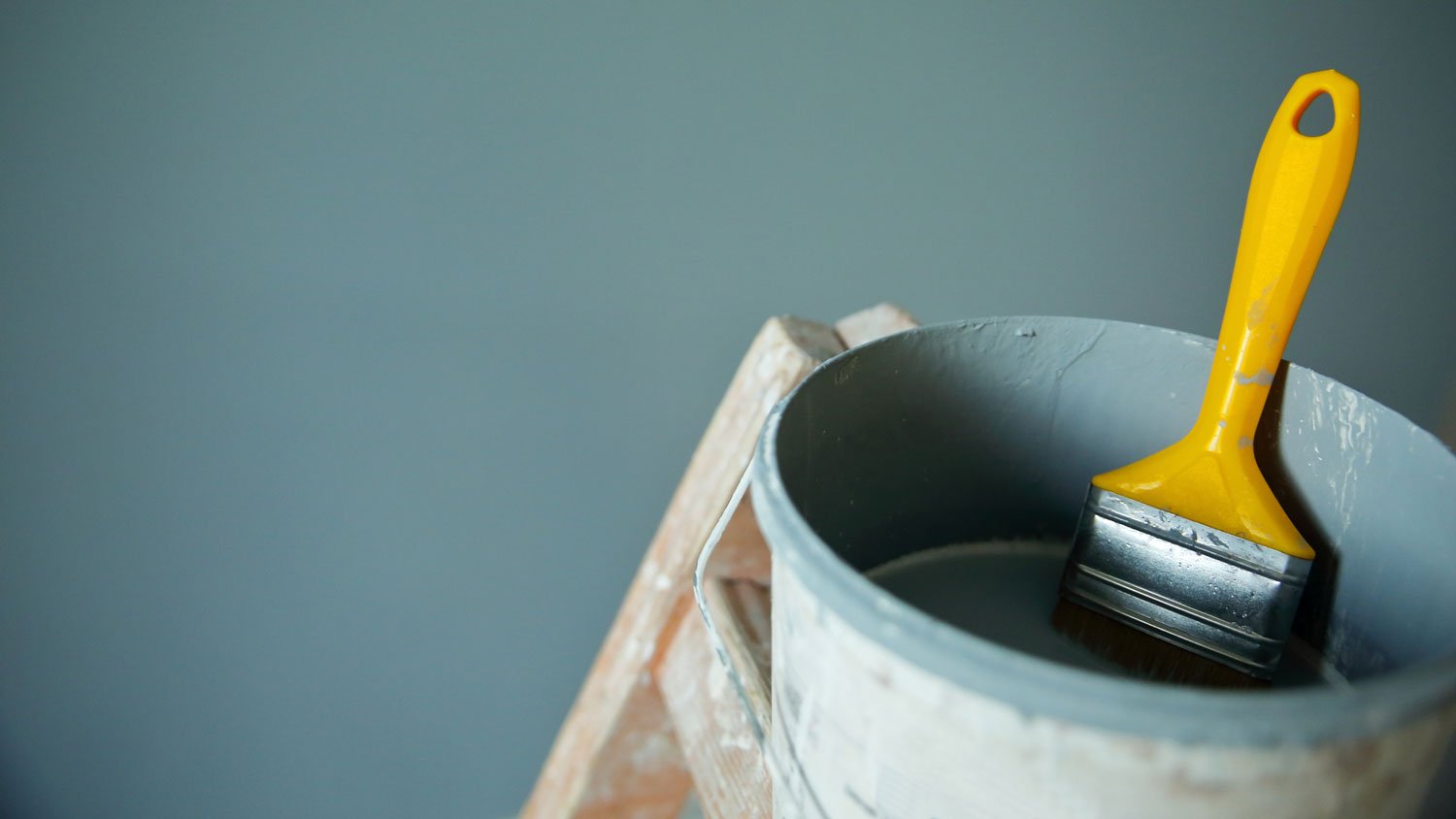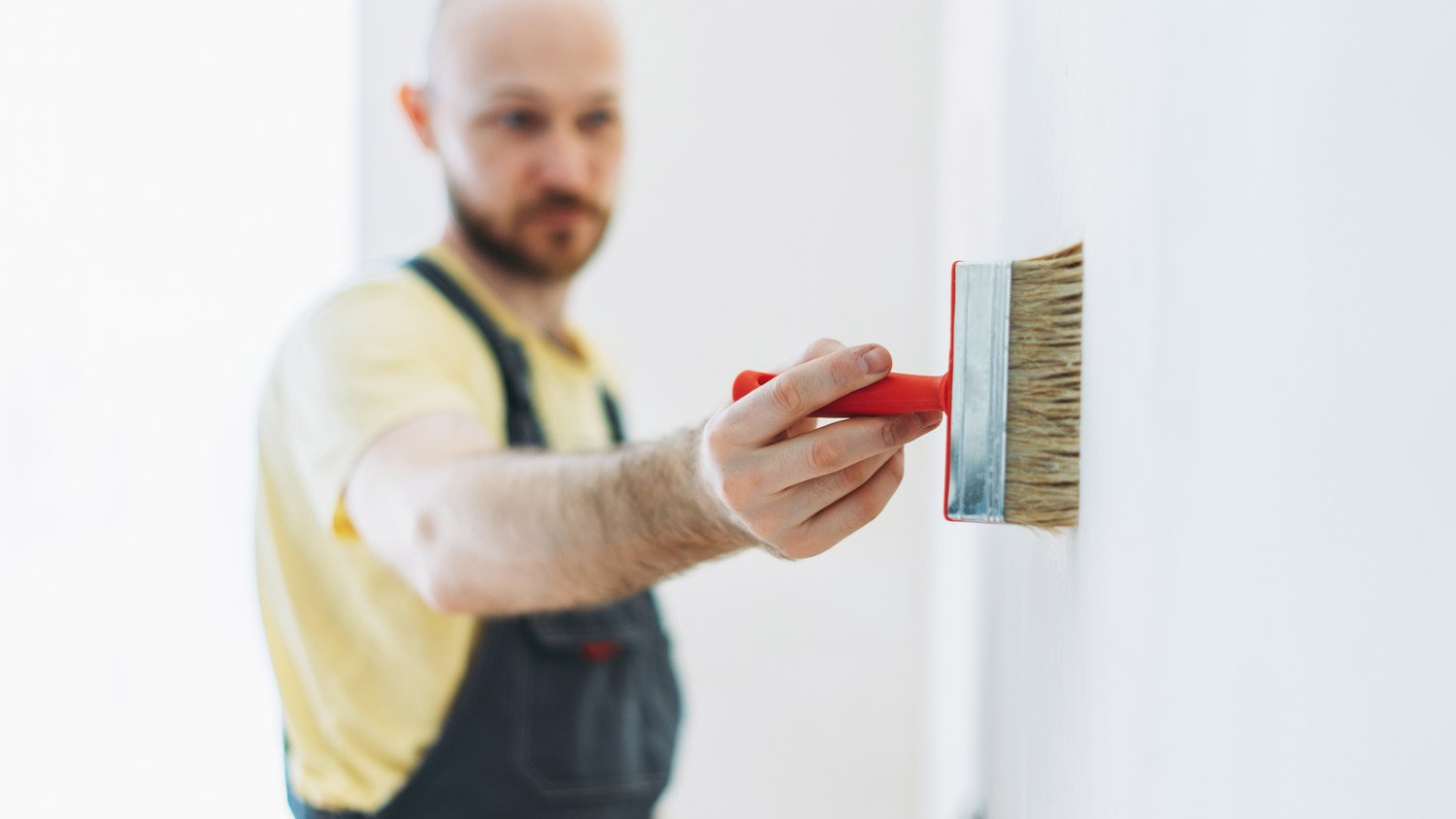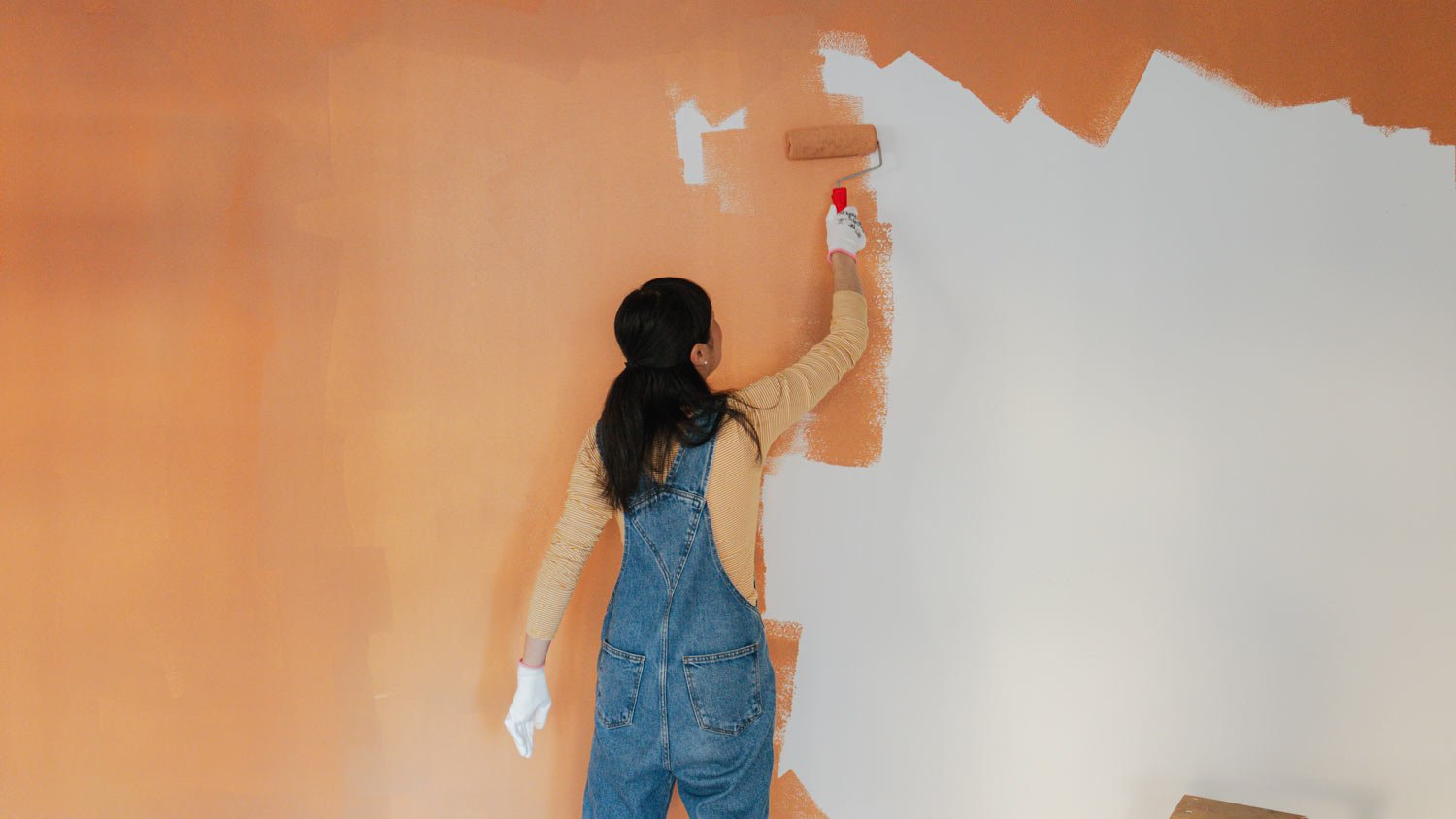Best Paint for Walls: Which Type Is Right for Your Project?
Color is just one consideration when choosing wall paint


It's easy to feel excited and overwhelmed by the vast array of color options when choosing paint for your home. That said, to pick the best paint for your walls, you should factor in paint sheen, composition, finish—all of which impact the paint’s durability, final look, and level of VOC emissions. If you need help determining which paint type is best for your walls, consult a local interior painter to make an informed decision.
Best Types of Paint for Walls by Composition
The primary options for wall paint are latex, acrylic, and oil-based. Read on to learn more about the key differences between latex, acrylic, and oil-based paint, as well as the pros and cons of each.
1. Latex Paint
Latex paint is a strong choice for indoor painting projects, as it dries quickly and is considered environmentally-responsible. It’s easy to clean with soap and water, but isn’t the most durable option available, which should be a concern if you have kids or pets. Ultimately, it’s best suited for low-traffic rooms or ceiling painting projects.
Pros of Latex Paint:
Dries and cures very quickly
Won’t yellow over time
Sustainable
More affordable than other paint types
Low VOC emissions
Cons of Latex Paint:
Difficult to transition from a dark color to a light color
Not suitable for wood
Less durable than other paints
Doesn’t adhere well to metal or steel
2. Acrylic Paint

Acrylic paint is another water-based paint, but it has a higher polymer count than latex paint, making it much more durable. In fact, after application, it expands and contracts, allowing it to withstand temperature fluctuations and periods of higher humidity. These factors make it a great option for bathroom paint. It is more expensive than latex paint, though.
Pros of Acrylic Paint:
Water-resistant
Excellent in varying temperatures
UV-resistant
Mold and mildew-resistant
Cons of Acrylic Paint:
Produces more VOCs than latex
Requires multiple coats
More expensive
3. Oil-Based Paint
Oil-based paints are made by mixing pigments with natural oil, such as linseed, or synthetic alkyd (made from polymer). Because it dries with a very hard finish, it’s considered far more durable than acrylic or latex. Plus, this type of paint tends to last longer than others. That said, oil-based paints release a higher level of VOCs, which makes them the least eco-friendly choice—often, they’re better suited to small areas such as trim and molding.
Pros of Oil-Based Paint:
Very durable
Easy to clean
Stain and scratch-resistant
Cons of Oil-Based Paint:
High VOCs
Takes a long time to dry
Requires chemicals to clean up
Can yellow over time
Best Type of Paint Finish for Walls

In addition to the color and composition of your paint, it's essential to consider the finish. The finish determines the level of shine, the paint's durability, and its resistance to stains and moisture.
1. Flat/Matte Finish
Flat paint has a non-reflective finish, while matte has a low luster. Both fall on the least shiny end of the spectrum, and paint brands generally offer only one of these options. Flat and matte paints provide excellent coverage and can conceal imperfections, like old nail holes. However, they are prone to damage and should only be used in low-traffic rooms.
Best for: Bedrooms, dining rooms, ceilings
2. Eggshell Finish
Eggshell paints offer a slight shine compared to flat or matte paints, resembling the texture of an eggshell. They are more durable than flat finishes and better at resisting scuffs and scratches. We recommend using eggshell paints in medium-traffic rooms because they are relatively easy to DIY clean.
Best for: Entryways, hallways, living rooms
3. Satin Finish
Satin paint has a slightly more glossy finish than eggshell. Satin paints are popular in rooms with higher humidity, such as bathrooms and kitchens, because they are easy to clean and highly moisture-resistant. However, one drawback of satin paint is that it can reveal brush or roller marks, making touch-ups more challenging.
Best for: Bathrooms, kitchens, kids’ rooms, family rooms
4. Semi-Gloss
Semi-gloss paints are on the shiner end of the spectrum; they reflect light much more brightly compared to satin paint. A very durable type of paint, semi-gloss finishes have a high resistance to moisture and mildew but will show imperfections more readily than less shiny finishes.
Best for: Bathrooms, kitchens, laundry rooms, trim, windows, doors
Best Wall Paint Brands
When shopping for interior paint, it’s easy to get overwhelmed by the wide variety of brand options. After reviewing several different interior paint brands, here are a few that stood out.
HGTV Home
Valspar Reserve
Sherwin-Willaims
Behr
Clark + Kensington
Best Way to Prime Walls for Painting

Paint primer prepares the surface for painting and acts more like a sealant than paint. It's not always necessary to use a primer. For example, you can skip the primer if the old paint is in good condition without chipping or peeling. However, if you notice stains or signs of needed repair, or if you're changing the paint color, primer can be helpful.
There are three types of primer: oil-based, acrylic, and shellac. For interior walls, we recommend using shellac primer because it’s excellent at blocking stains and preventing water and smoke damage. It can be applied to a variety of materials such as wood, metal, plaster, and plastic.
How to Prime Walls for Painting
Once you’ve picked out the best type of paint for your home’s walls, you’ll want to prep your walls before applying any coats for the best application. Follow these tips for excellent results.
Clean walls with a sponge and soapy warm water.
Wipe them dry with a cloth and allow them to fully dry
Look for any signs of mold, mildew, or other issues. Address any problems before painting.
Sand any rough spots with sandpaper or a sanding block.
Prime the walls that need it.





- Types of Paint: Which Is Best for Your Project?
- What Is the Best Exterior Paint? Here Are the Top 6 Choices
- Latex vs. Acrylic Paint: Which Is Best for Your Next Painting Project?
- The Ultimate Guide to the 5 Types of Paint Finishes
- Best Paint For Cabinets—Oil, Enamel, or Hybrid?
- The 7 Best Paint Sheens for Your Bedroom
- 5 Best Paints for a Wood Fence
- What Is the Best Paint for Garage Walls and Ceilings?
- Best Bathroom Vanity Paint and Finish: A Homeowner’s Guide
- Choosing the Best Paint for Your Deck: A Complete Guide to Deck Paints










